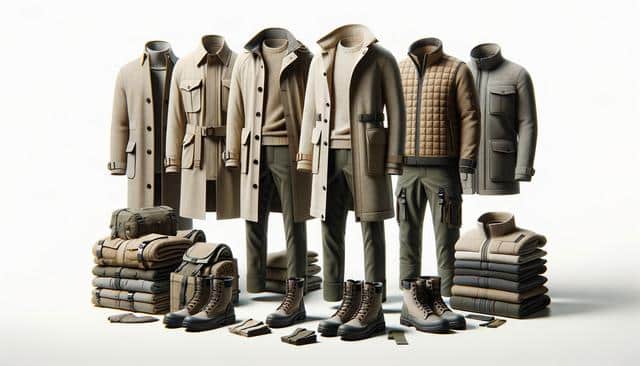
Smart and Stylish: Workwear That Adapts to Every Climate
Understanding the Need for Climate-Adaptive Workwear
As work environments become more dynamic, employees are increasingly seeking clothing that adapts to varying temperatures and weather conditions. Whether working outdoors, commuting in unpredictable climates, or moving between heated offices and cooler warehouses, comfort and functionality are essential. Climate-adaptive workwear responds to these challenges by incorporating materials and designs that regulate body temperature, wick moisture, and provide breathability. As a result, professionals can stay productive and presentable throughout the day without the need for constant wardrobe changes.
Traditional workwear often prioritizes durability and uniformity over comfort. However, with technological advancements in textiles and a growing awareness of employee well-being, the industry is shifting. New fabrics and layering systems allow garments to respond to environmental changes in real time. This evolution in workwear is not only about physical comfort but also about enhancing performance and reducing distractions caused by discomfort.
Features That Make Workwear Climate-Responsive
What sets climate-adaptive workwear apart is its ability to handle temperature fluctuations and provide year-round comfort. Modern designs integrate performance fabrics and thoughtful construction to achieve this balance. Common features include:
- Moisture-wicking materials that keep the body dry and cool in hot conditions.
- Insulating layers that trap warmth without adding bulk for colder environments.
- Ventilation zones or mesh panels that increase airflow.
- Convertible elements, such as zip-off sleeves or adjustable hems for versatility.
These features are particularly beneficial for workers in industries like construction, logistics, and field services, where exposure to outdoor elements is frequent. Additionally, climate-adaptive pieces are becoming more common in traditional office environments, especially in regions where seasons can change quickly or where building temperature controls vary significantly.
Blending Style with Functionality
One of the biggest advancements in workwear has been the integration of style with performance. Employees no longer have to choose between a professional appearance and physical comfort. Designers are now creating pieces that reflect current fashion trends while maintaining the technical features needed for climate adaptability. Tailored fits, modern cuts, and neutral palettes allow these garments to fit seamlessly into various workplace settings.
Some key elements of stylish yet functional workwear include:
- Streamlined silhouettes that work well in both formal and casual environments.
- Minimalist color schemes and subtle patterns that enhance visual appeal without appearing overly casual.
- Multi-use pieces such as blazers with hidden vents or trousers with stretch panels for mobility.
This fusion of aesthetics and utility is particularly important for client-facing roles, where first impressions matter. Employees can feel confident in their appearance while staying comfortable through long meetings or travel days.
Sustainable and Smart Fabric Choices
Another key driver in the development of climate-adaptive workwear is sustainability. Many brands are now focusing on eco-friendly materials that provide the same, if not better, performance as traditional synthetic fabrics. These include organic cotton blends, recycled polyester, and innovative fibers that are biodegradable or require less water in production.
Smart textiles are also making their way into the workwear market. These fabrics can adjust their insulation properties based on temperature and even monitor bodily metrics such as sweat levels or heart rate. While still emerging, this technology is paving the way for truly intelligent clothing that can respond to both environmental and physiological changes.
Employees and companies alike benefit from sustainable workwear choices. Not only do they reduce environmental impact, but they also often last longer due to higher-quality construction, lowering replacement costs and promoting a more conscious approach to workplace attire.
How to Build a Climate-Adaptive Workwear Wardrobe
Creating a versatile and climate-ready work wardrobe doesn’t require a complete overhaul. Instead, it starts with selecting a few key pieces that can be layered, mixed, and matched for various conditions. Consider investing in:
- A lightweight, moisture-wicking base layer for year-round wear.
- A mid-layer that provides insulation without bulk, such as a fleece or softshell vest.
- An outer layer that offers weather protection, like a breathable rain jacket or windbreaker.
- Adaptable pants with stretch and moisture control.
- Accessories like breathable socks and moisture-wicking undergarments.
Choosing neutral colors and timeless designs ensures that these pieces remain relevant across seasons and trends. It’s also helpful to select garments that are easy to care for and durable enough to handle frequent wear and washing. With the right approach, professionals can stay comfortable and stylish, no matter what the forecast brings.
Conclusion: Dress Smart, Work Smarter
Climate-adaptive workwear is transforming how professionals dress for success. By integrating innovative materials, functional design, and modern aesthetics, today’s work wardrobe can handle changing temperatures and conditions with ease. For employees across industries, investing in such versatile apparel enhances comfort, promotes productivity, and supports a professional image. Whether you’re navigating a chilly morning commute or a warm afternoon site visit, climate-adaptive clothing ensures you stay focused on the task—not the weather.